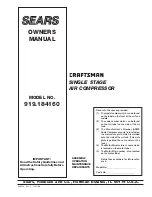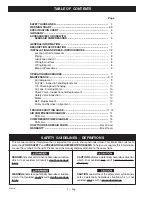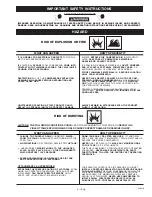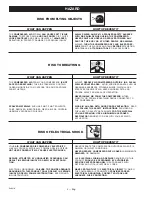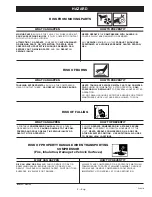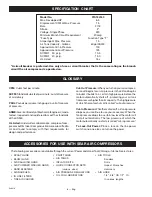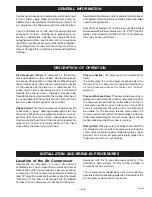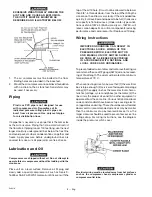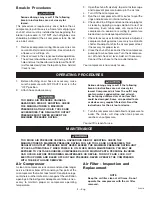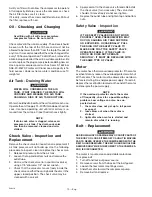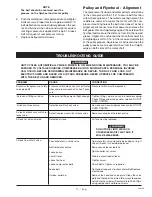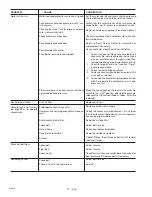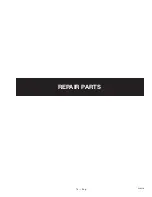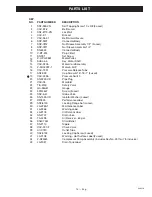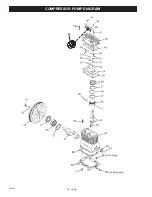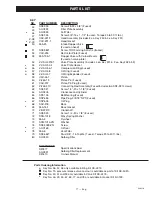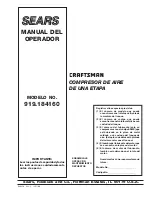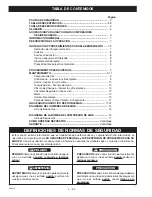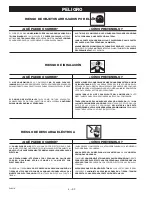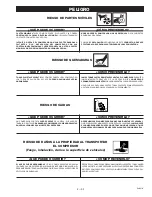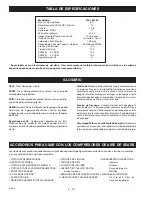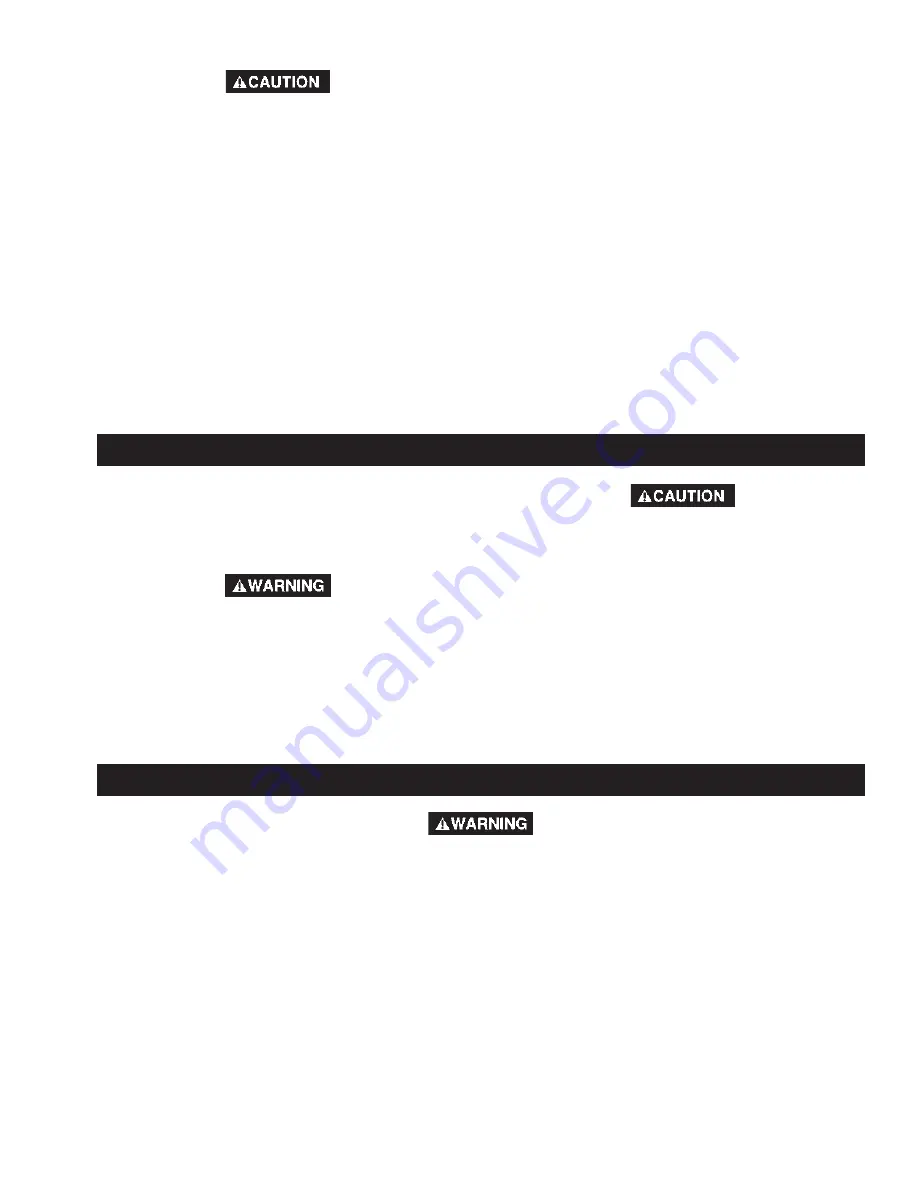
9 — Eng
D20410
Break-In Procedures
Serious damage may result if the following
break-in instructions are not closely fol-
lowed.
This procedure is required only once; before the air
compressor is put into service. Some form of piping or
shut-off valve must be installed before beginning the
break-in procedure. A 1/2" NPT shut-off globe valve
should be installed at the air compressor tank. Do not
use a ball valve.
1.
Recheck compressor wiring. Make sure wires are
secure at all terminal connections. Free all contacts
of loose wire cuttings, etc.
2.
Check oil level in the crankcase before operation.
The oil level should be even with the top of the fill
hole and must not be allowed to be lower than 3/8"
(six threads down) from the top at any time. Add oil
if level is low.
3.
Open the shut-off valve fully, to permit air to escape
and to prevent pressure build-up in the air tank.
4.
Turn ON the air compressor.
5.
Run the air compressor for 30 minutes to seal the
rings and lubricate all internal surfaces.
6.
Check all air line fittings and connections/piping for
air leaks by applying a soap solution. Correct as
necessary. Even minor leaks can cause this air
compressor to overwork, resulting in premature
break-down or inadequate performance.
7.
Check for excessive vibration and noise. Adjust air
compressor belt guard as necessary to eliminate
chatter. Re-adjust or shim the air compressor feet,
if necessary for proper level.
8.
Close the shut-off valve and let the air compressor
pump up to cut-out pressure. Turn the air compres-
sor off and check oil level. Add oil if necessary.
Connect the air hose to the air outlet adapter.
Your compressor is now ready for use.
1.
Before attaching an air hose or accessory, make
sure the pressure switch OFF/AUTO lever is in the
"OFF" position.
2.
Attach hose and accessory.
TOO MUCH AIR PRESSURE CAUSES A
HAZARDOUS RISK OF BURSTING. CHECK
THE MANUFACTURER'S MAXIMUM
PRESSURE RATING FOR AIR TOOLS AND
ACCESSORIES. THE REGULATOR OUTLET
PRESSURE MUST NEVER EXCEED THE
MAXIMUM PRESSURE RATING.
Serious damage may result if the following
break-in instructions are not closely fol-
lowed. Compressed air from the outfit may
contain water condensation and oil mist.
Do not spray unfiltered air at an item that
could be damaged. Some air operated tools
or devices may require filtered air. Read the
instructions for the air tool or device.
3.
Turn the compressor on and allow tank pressure to
build. The motor will stop when tank pressure
reaches cut-out pressure.
Your outfit is ready for use.
Air Compressor
A clean air compressor runs cooler and provides longer
service. Clean or blow off fins and any other parts of the
air compressor that collect dust or dirt. Do not place rags,
containers or other material on or against the ventilation
openings in the belt guard. Adequate ventilation is nec-
essary to maintain proper air compressor operating
temperature.
Air Filter - Inspection and
Replacement
NOTE
Keep the air filter clean at all times. Do not
operate the compressor with the air filter
removed.
TOO MUCH AIR PRESSURE CAUSES A HAZARDOUS RISK OF BURSTING. CHECK THE
MANUFACTURER'S MAXIMUM PRESSURE RATING FOR AIR TOOLS AND ACCESSORIES. THE
REGULATOR OUTLET PRESSURE MUST NEVER EXCEED THE MAXIMUM PRESSURE RATING.UNIT
CYCLES AUTOMATICALLY WHEN POWER IS ON. WHEN DOING MAINTENANCE, YOU MAY BE
EXPOSED TO VOLTAGE SOURCES, COMPRESSED AIR OR MOVING PARTS. PERSONAL INJURIES
CAN OCCUR. BEFORE PERFORMING MAINTENANCE OR REPAIR, TURN OFF AND LOCK OUT
ELECTRIC POWER AND BLEED OFF AIR TANK PRESSURE. NEVER OPERATE THE COMPRESSOR
WITH THE BELT GUARD REMOVED.
OPERATING PROCEDURES
MAINTENANCE

